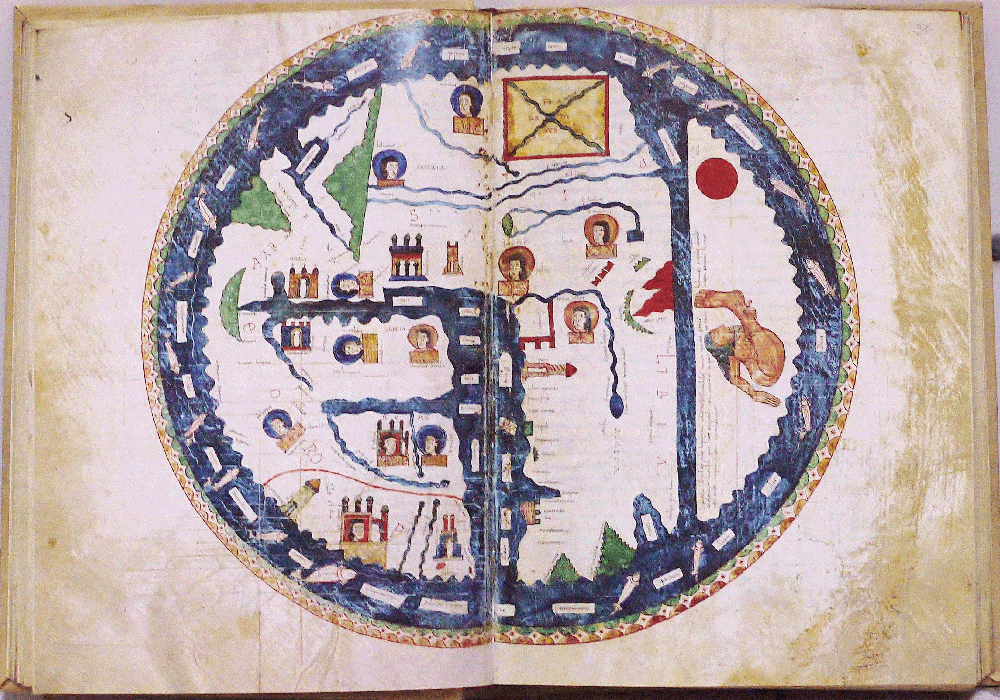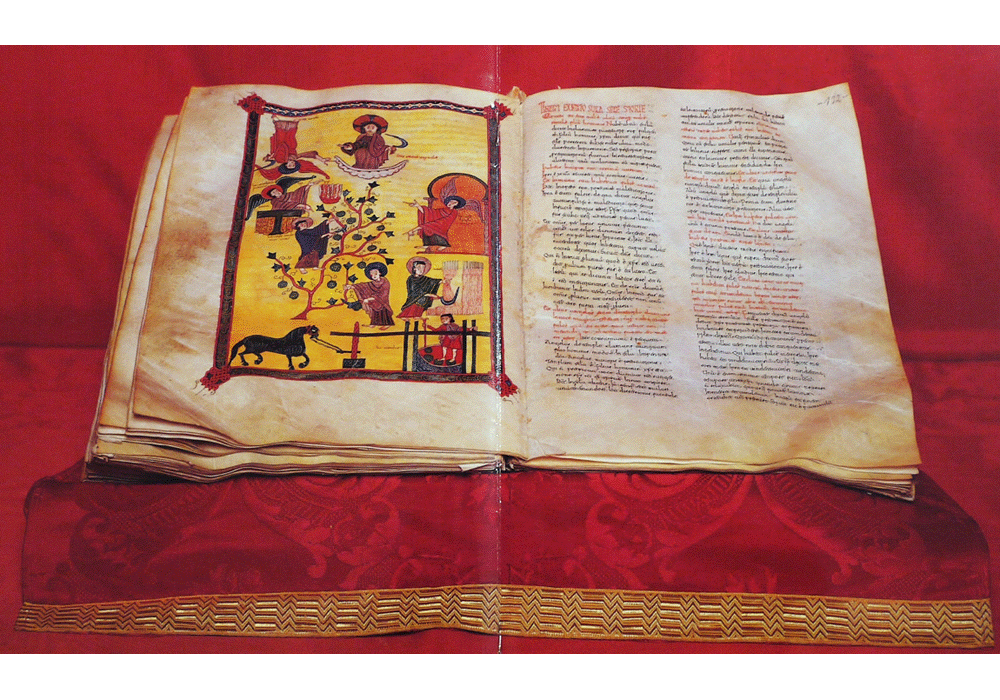|
|
|
| Seguir @vicentgarciaedi Twittear |
|
vgesa |

|
|
|
Synopsis: The author, who was possibly born in 730 and died towards 798, was probably abbot of the San Martín de Liébana Monastery, chaplain of Osinda, wife of Silo –king of Asturias from 755 to 783– and who spiritually modelled the Spain of the VIII century. The Beatos bring to life the artistic, religious and cultural world of the first millennium AD in Spain. The characteristic era of these centuries, with their particular way of life, refined, full of terror, magic and fearful visions, all of which may be found among the pages of these works. The comment which is made in the Beatos about Saint John’s Apocalypse, contains a prophetic orientation, distanced from the evangelist concept of that Saint: rather than predicting the future offers us the terror of punishment. The Beato of the Burgo of Osma, according to several places in the codex, was written by the cleric Pedro and illustrated by Martino in 1086. There are scenes with floral decorations which appear to be Hellenistic. Others, pre-Roman or Carolingian, without forgetting the traditional autochthonous. The illustrating artist, is a classicist, of occidental and contemporary aesthetics. It is linked to the first Beato of the National Library, with that of the Escorial and with that of San Millán. The colour is bright, with intense backgrounds, reds, yellows or greens. Outstanding as the most beautiful of all the illustrations is that of the Saviour on horseback, accompanied by other saints. The drawing is exquisite, with a line elegance which enlarges and ripples the shapes. |
IBIC Rating: |
||
|
AC History of art / art & design styles |
1D Europe
|
|



















